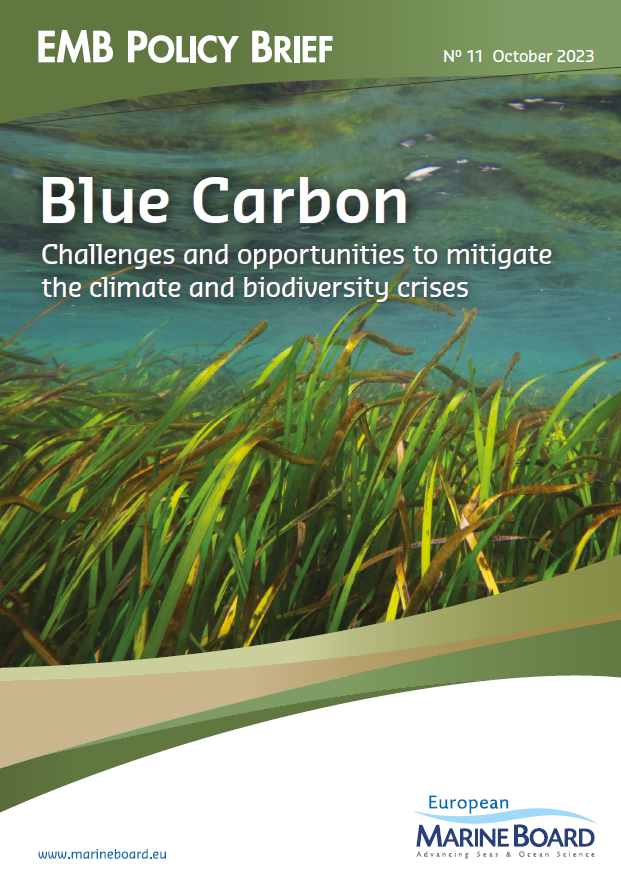Outputs
 EMB Policy Brief 11 'Blue Carbon: Challenges and opportunities to mitigate the climate and biodiversity crises' (October 2023)
EMB Policy Brief 11 'Blue Carbon: Challenges and opportunities to mitigate the climate and biodiversity crises' (October 2023)
News article on the launch of the Policy Brief (October 2023)
Webinars
The document was presented during a dedicated webinar: re-watch it here
Background
Climate change is one of the major challenges of this century. In recent years, the Ocean has been increasingly recognized as an asset in terms of climate change solutions by providing promising mitigation opportunities, including Blue Carbon. The importance of mangroves, saltmarshes and seagrass meadows as carbon sequestering coastal ecosystems is widely recognized among climate and marine scientists. Important knowledge gaps remain however, e.g. about local and global extents, environmental factors affecting carbon sequestration, other greenhouse gas fluxes from these ecosystems and provenance of the sequestered carbon. Restoring these ecosystems can entail many co-benefits in terms of e.g. blue tourism, biodiversity, ecosystem services and resilience against anthropogenic or natural disturbances. There is a policy need for better valuation of the various aspects of blue carbon ecosystems, to support restoration and management actions.
Other parts of the marine environment gained attention as contributing to blue carbon. Seaweeds can end up as sequestered carbon when deposited in stable sediments or sunk to the deep Ocean. Shellfish reefs can generate and/or trap organic-rich sediments and under the right conditions be net carbon accumulators. Dead marine fauna sinking to the deep Ocean adds to the global biological carbon pump. Shelf sediments are important stocks of Blue Carbon, which when disturbed can be released to the Ocean and contribute to acidification and ultimately climate change. Many knowledge gaps on global extent, local and environmental variation, quantification, fluxes, fate and acknowledgement in marine and climate management need to be filled.
Working Group objectives
The aim of this working group was to provide a concise overview of Blue Carbon, including recommendations relevant for policy and future research funding, covering the following topics:
- What is Blue Carbon?
- Why do we need Blue Carbon?
- How does Blue Carbon fit into the Ocean Carbon Budget?
- The Biological Carbon Pump
- Blue Carbon examples and benefits
- Uncertainties and questions on Blue Carbon climate change
- Summary and Recommendations
Working Group Members
Chair: Sheila Heymans (EMB)
- Jean-Pierre Gattuso (CNRS, France)
- Natalie Hicks (U Essex, UK)
- Peter Landschützer (VLIZ, Belgium)
- Griet Neukermans (Ugent, Belgium)
- Hans-Otto Pörtner (AWI, Germany)
Meetings
- 10 January 2023 (kick-off meeting, online)
- 8 March 2023
- 5 April 2023
- 1 June 2023
Contact at the European Marine Board: Ana Rodriguez Email